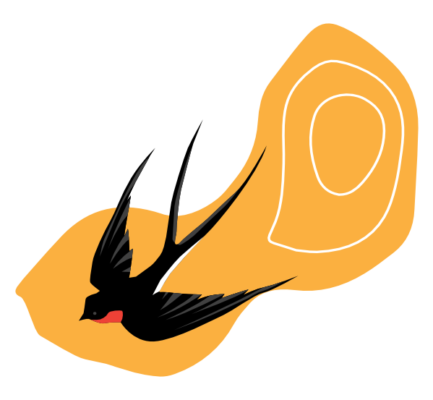Starting with geocaching?
Read our step by step guide
What is geocaching?
Geocaching is the world´s largest treasure hunt game. The goal is to find a hidden treasure, a “cache,“ using a GPS. The cache is hidden in a place precisely determined by the coordinates.

What is a cache?
A cache is usually a container of various sizes. Each cache contains a notebook, a so-called logbook, a pen or pencil and small items for exchange, which are left here by the geocachers. Each cache has its own unique GC code. You can also find wooden coins in the caches, so-called SWG. You are welcome to keep these as a souvenir!
What is a travel bug?
Sometimes you can find a special item in the caches – so-called travel bugs. These are items with a unique code that travel the world from cache to cache. Using this code, we can track the travels of a specific travel bug. Don’t keep the travel bugs, but move them to the next cache. ClimateQuest’s travel bug is the Sustainability Swallow.


How to play geocaching
To play geocaching you need a device with a GPS, such as smartphone.
Step 1: Create a user profile with a nickname on www.geocaching.com. There are two types of membership, Basic and Premium, the latter of which is paid. Take a while to study your chosen caches via the online map.
Step 2: Download a mobile app – we recommend C:Geo or Locus
Step 3: Download offline vector maps and caches for your chosen location to the application.
Types of caches, size, difficulty, terrain
In the ClimateQuest geocaching challenge we are using two types of caches
Traditional cache (marked with a green icon on the map) – the most common and simplest type of cache. The “traditional“ is located directly at the listed coordinates. When searching for this cache, all you have to do is follow the cache coordinates directly using the application.
Letterbox (marked on the map with an envelope icon) – To find the letterbox, you must complete the tasks described in the listing of the cache found in the cache description. Often, the listing takes the form of a story that leads you to decipher the coordinates where the cache is hidden.
Note: Before your cache hunt look at the attributes of the cache at www.geocaching.com – check out the difficulty, terrain assessment and the size of the cache, which will tell you more about the type of cache you are looking for. There are “nano” caches the size of a small magnet, but sometimes you can also find “large” caches the size of a shipping container!


Cacher´s rules
Rule 1. In the field, I try to act inconspicuously during my search, so that the hiding place is not revealed and the cache is not destroyed or stolen. We call nonchessers “muggles”, so I try not to let the muggles see me.
Rule 2. When I find the cache, I enter the date and my geocaching nickname in the logbook.
Rule 3. If I take something from the cache, I leave a new item of approximately the same value.
Rule 4. After finding a cache, I return it to the same place and disguise it as it was.
Rule 5. I log the found cache through my account at www.geocaching.com.


